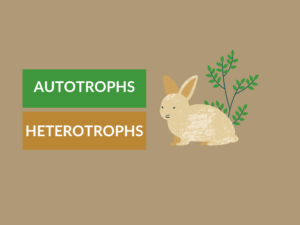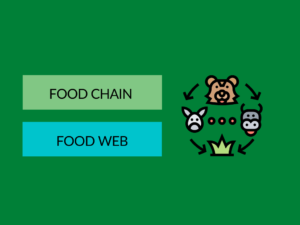What is/are autotrophs?
An autotroph, also known as a primary producer, is an organism that can produce its own food using sunlight and/or inorganic substances. Autotrophs are crucial for the sustenance of life on Earth, as they create organic compounds through photosynthesis or chemosynthesis, serving as the foundation of food chains.
Examples of autotrophs:
- Plants: They convert sunlight, carbon dioxide, and water into glucose through photosynthesis.
- Algae: These aquatic organisms also perform photosynthesis to produce energy.
- Cyanobacteria: They utilize photosynthesis and are often found in freshwater and marine environments.
Uses of autotrophs:
Autotrophs play a vital role in our ecosystem and have various uses:
- Oxygen production: Through photosynthesis, autotrophs release oxygen into the atmosphere.
- Food production: Many autotrophs are consumed directly as food by humans and animals.
- Energy sources: Autotrophs form the basis of the food chain, providing energy to heterotrophs.
- Environmental balance: They help maintain the balance of gases in the atmosphere and regulate the carbon cycle.
What is/are heterotrophs?
Heterotrophs are organisms that cannot produce their own food and rely on consuming other organisms or organic matter for energy. These organisms obtain organic compounds from autotrophs or other heterotrophs, forming an interconnected web of organisms in an ecosystem.
Examples of heterotrophs:
- Animals: They consume autotrophs or other animals to obtain energy.
- Fungi: Heterotrophic organisms that obtain nutrients by decomposing organic matter.
- Some bacteria: Certain bacteria obtain their nutrients by consuming organic matter.
Uses of heterotrophs:
Heterotrophs fulfill various roles in the ecosystem and have significant uses:
- Predation and herbivory: Heterotrophs are part of the food chain, supporting the balance of populations within ecosystems.
- Decomposition: Detritivores and decomposers break down dead organic matter, recycling nutrients back into the ecosystem.
- Pollination and seed dispersal: Certain heterotrophs, like bees and birds, aid in plant reproduction and seed dispersal.
Differences Table
| Difference Area | Autotrophs | Heterotrophs |
|---|---|---|
| Nutritional Mode | Produce their own food | Obtain food from other organisms |
| Energy Source | Sunlight or inorganic substances | Organic matter or other organisms |
| Examples | Plants, algae, cyanobacteria | Animals, fungi, some bacteria |
| Food Production | Convert sunlight and CO2 into glucose through photosynthesis | Consume autotrophs or other heterotrophs for energy |
| Role in Food Chain | Primary producers; form the base of the food chain | Consumers; occupy higher trophic levels |
| Oxygen Production | Release oxygen through photosynthesis | N/A (no oxygen production) |
| Environmental Balance | Contribute to the regulation of atmospheric gases | N/A (not directly involved) |
| Examples in Ecosystem | Found in all ecosystems | Found in all ecosystems |
| Energy Source for Others | Provide energy to heterotrophs | Reliant on autotrophs or other heterotrophs as energy sources |
| Reproduction | Produce spores, seeds, or other specialized structures for reproduction | Produce offspring through sexual or asexual reproduction |
Conclusion:
In summary, autotrophs are organisms capable of producing their own food through photosynthesis or chemosynthesis, while heterotrophs rely on consuming other organisms for their nutritional needs. Autotrophs are primary producers that serve as the foundation of food chains, produce oxygen, and help maintain environmental balance. Heterotrophs, on the other hand, play various roles as consumers, decomposers, and pollinators. Their interactions form a complex ecosystem where energy and nutrients are transferred.
People Also Ask:
- What is the difference between autotrophs and heterotrophs?
Autotrophs can produce their own food, while heterotrophs need to consume other organisms for energy.
- Why are autotrophs important?
Autotrophs produce oxygen, are the basis of food chains, and help regulate atmospheric gases.
- How do heterotrophs obtain energy?
Heterotrophs obtain energy by consuming autotrophs or other heterotrophs.
- Are humans autotrophs or heterotrophs?
Humans are heterotrophs; they rely on consuming other organisms for energy.
- Do autotrophs and heterotrophs coexist?
Yes, autotrophs and heterotrophs coexist and rely on each other in the ecosystem for energy and nutrient cycling.



